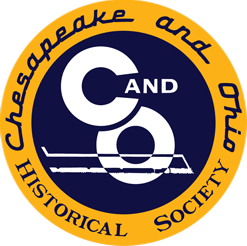

$24.95
This book draws together most of the symbols and typography used by C&O and some of its predecessors in advertising itself and its services. The intent is to place in one location all major design usages made by the C&O over its entire life on publications, timetables, and advertising, as well as locomotives, structures, and rolling stock. In short, this is the iconography of the C&O, 1837-1980.
Why such a book? It has been the experience of C&OHS that modelers, model manufacturers, preservationists, historians, railfans, producers of memorabilia, and publishers of books are in constant need of data regarding how C&O and its predecessors advertised themselves. We are consistently engaged in researching these things. With this book we intend to place all, or almost all, of this in one place for general use. The book gives the background history of the railway itself as it influenced the development and change of its advertising symbols and images (iconography). You will find included Chessie and her family, the most important and famous of all C&O symbols, as well as the best remembered “herald” and slogan of all: “C&O For Progress.” In addition C&O used scores of different arrangements of its initials, road name, and many different slogans and designs. These were set in scores of varied typefaces (fonts) and decorative designs.
Railfans and modelers often refer to a railway’s distinctive logo as a “herald.” The book traces the development of a C&O herald with the first truly distinctive design starting in 1884 that was used over a long period of time. This “Big C&O” design was used in one form or another until 1931, when more imaginative designers in the Public Relations Department replaced it. They crested the famous 1930s-40s era “steam train” design with a stylized steam passenger train was placed at the bottom of an intertwined “C and O.” This morphed into the famous “C&O for Progress” design in two iterations. Overlaid on all this was Chessie, the most important railroad advertising symbol of all time, and George Washington in various poses, father not only of his country but of C&O itself!
The book is illustrated with examples of almost every iteration of each of the major heralds, as well as topography and designs used only briefly or even once over the period of 120 years covered. The herald evolution of the Pere Marquette and its predecessors and the Hocking Valley and its predecessors are also illustrated. We additionally include specialty designs such as those used for various named trains such as the Fast Flying Virginian, Sportsman, and George Washington.
In short, this book has everything one needs to know about C&O advertising symbols, designs, heralds, logos, and typography. Softbound – 96 pages, 10-lb. Glossy paper.
This book draws together most of the symbols and typography used by C&O and some of its predecessors in advertising itself and its services. The intent is to place in one location all major design usages made by the C&O over its entire life on publications, timetables, and advertising, as well as locomotives, structures, and rolling stock. In short, this is the iconography of the C&O, 1837-1980.
Why such a book? It has been the experience of C&OHS that modelers, model manufacturers, preservationists, historians, railfans, producers of memorabilia, and publishers of books are in constant need of data regarding how C&O and its predecessors advertised themselves. We are consistently engaged in researching these things. With this book we intend to place all, or almost all, of this in one place for general use. The book gives the background history of the railway itself as it influenced the development and change of its advertising symbols and images (iconography). You will find included Chessie and her family, the most important and famous of all C&O symbols, as well as the best remembered “herald” and slogan of all: “C&O For Progress.” In addition C&O used scores of different arrangements of its initials, road name, and many different slogans and designs. These were set in scores of varied typefaces (fonts) and decorative designs.
Railfans and modelers often refer to a railway’s distinctive logo as a “herald.” The book traces the development of a C&O herald with the first truly distinctive design starting in 1884 that was used over a long period of time. This “Big C&O” design was used in one form or another until 1931, when more imaginative designers in the Public Relations Department replaced it. They crested the famous 1930s-40s era “steam train” design with a stylized steam passenger train was placed at the bottom of an intertwined “C and O.” This morphed into the famous “C&O for Progress” design in two iterations. Overlaid on all this was Chessie, the most important railroad advertising symbol of all time, and George Washington in various poses, father not only of his country but of C&O itself!
The book is illustrated with examples of almost every iteration of each of the major heralds, as well as topography and designs used only briefly or even once over the period of 120 years covered. The herald evolution of the Pere Marquette and its predecessors and the Hocking Valley and its predecessors are also illustrated. We additionally include specialty designs such as those used for various named trains such as the Fast Flying Virginian, Sportsman, and George Washington.
In short, this book has everything one needs to know about C&O advertising symbols, designs, heralds, logos, and typography. Softbound – 96 pages, 10-lb. Glossy paper.
